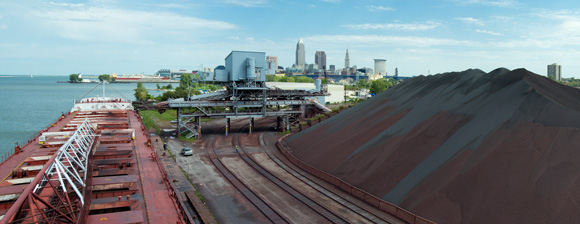
Fig: self unloader alongside terminal
Self unloading bulk carriers uses horizontal and vertical conveyor systems to discharge bulk cargoes. Originally developed to allow ships to handle cargoes at ports not equipped with their own gear, they are also used to reduce handling costs by minimising the need for stevedores.
Preventing/Dealing with Spillages and Overloads:
It is absolutely essential to avoid any spillage, and belt overload by taking the following measurements and precautions:-
